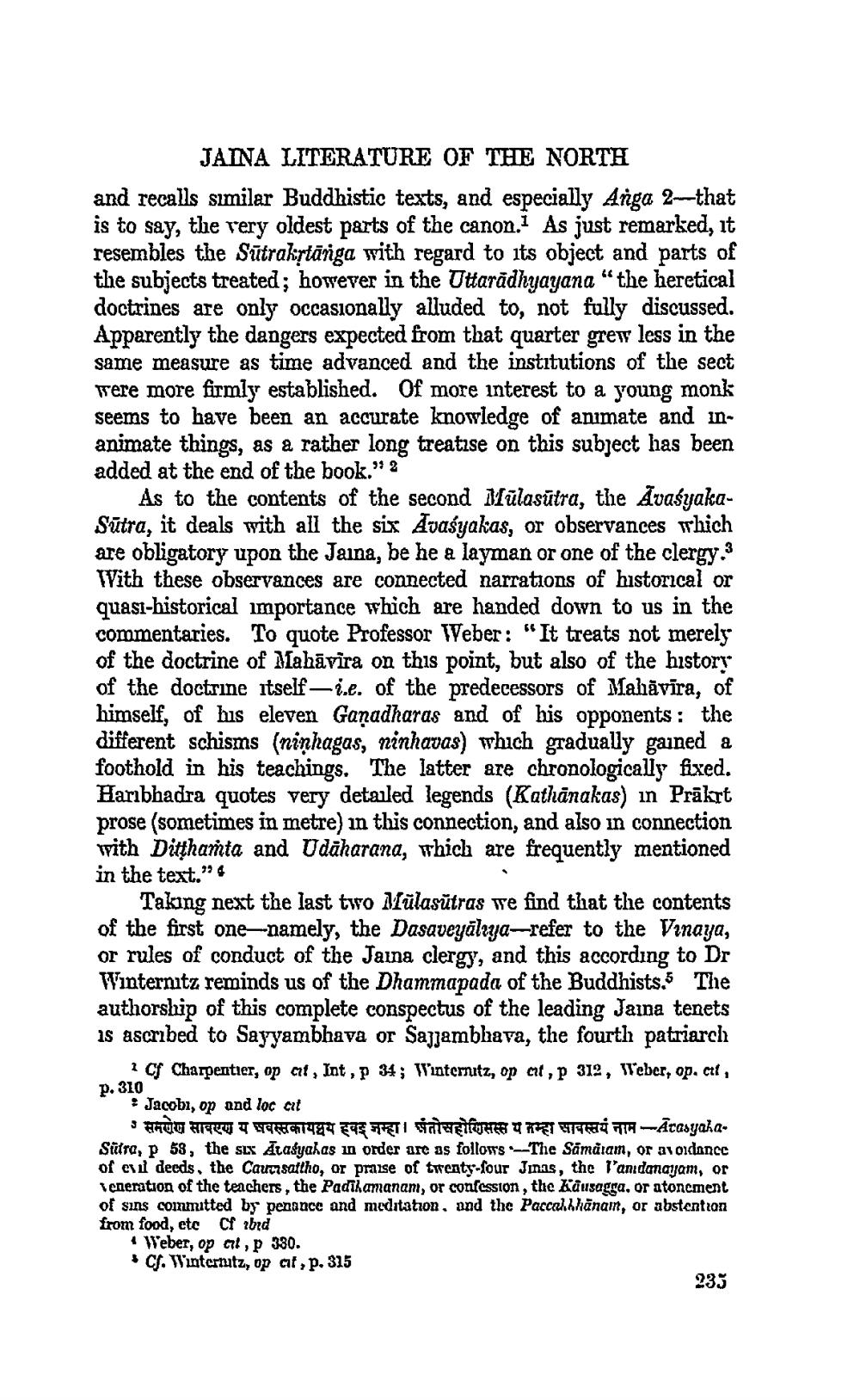________________ JAINA LITERATURE OF THE NORTH and recalls similar Buddhistic texts, and especially Anga 2-that is to say, the very oldest parts of the canon. As just remarked, it resembles the Sutrakstanga with regard to its object and parts of the subjects treated; however in the Uttaradhyayana "the heretical doctrines are only occasionally alluded to, not fully discussed. Apparently the dangers expected from that quarter grew less in the same measure as time advanced and the institutions of the sect were more firmly established. Of more interest to a young monk seems to have been an accurate knowledge of animate and inanimate things, as a rather long treatise on this subject has been added at the end of the book." 2 As to the contents of the second Mulasutra, the AvasyakaSutra, it deals with all the six Avasyakas, or observances which are obligatory upon the Jaina, be he a layman or one of the clergy. With these observances are connected narrations of historical or quasi-historical importance which are handed down to us in the commentaries. To quote Professor Weber: "It treats not merely of the doctrine of Mahavira on this point, but also of the history of the doctrine itself-ie. of the predecessors of Malavira, of himself, of his eleven Ganadharas and of his opponents: the different schisms (ninhagas, ninhavas) which gradually gained a foothold in his teachings. The latter are chronologically fixed. Haribhadra quotes very detailed legends (Kathanakas) in Prakrt prose (sometimes in metre) in this connection, and also in connection with Ditthanta and Udaharana, which are frequently mentioned in the text." 4 Taking next the last two Mulasutras we find that the contents of the first one-namely, the Dasaveyaliya--refer to the Vinaya, or rules of conduct of the Jaina clergy, and this according to Dr Winternitz reminds us of the Dhammapada of the Buddhists. The authorship of this complete conspectus of the leading Jaina tenets is ascribed to Sayyambhava or Sajjambhava, the fourth patriarch of Charpentier, op art, Int , p 34; Winternutz, op at , p 312, Weber, op. cit, Jacobi, op and loc art HUU Ke Tw1994 EESTI GCEISTEET -Atasyaha. Sutra, P 58, the six Atasyakas in order and as follows _-The Samaian, or avoidance of cul deeds, the Caucisattho, or prazse of twenty-four Jmas, the l'andanayam, or eneration of the teachers, the Padthamanam, or confesston, the Kusagga. or atonement of sins committed by penance and meditation, and the Paccah nanam, or abstentron from food, etc cf hd * Weber, op al, p 330. Cf. Wintertutz, op cit, p. 315 233 P. 310 or at ordo from food erutted by permanence Platin amanem, or controlour Jinas, stemnin




